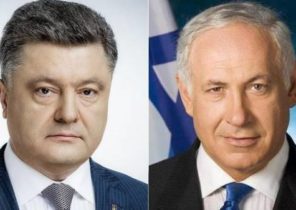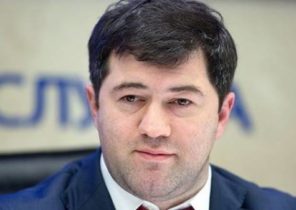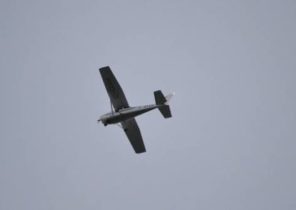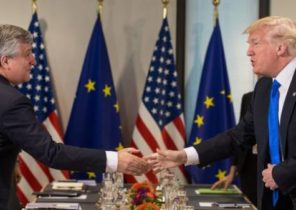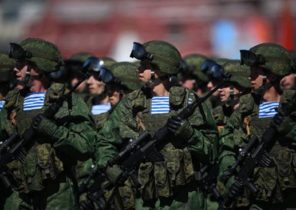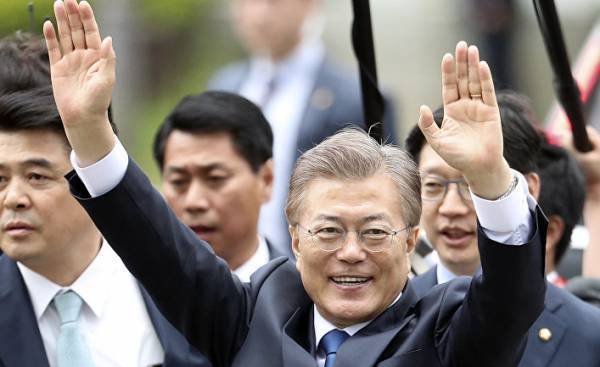
The President of South Korea moon Gein wants to return to politics, “solar beam”, which provides cooperation with its Northern neighbor. Anyway, the new approach will largely depend on the relationship with Donald trump.
New launches of ballistic missiles of North Korea after the election on may 9, the President of South Korea moon Jaina, which stands for dialogue between the two countries, as well as strong statements of Donald trump talking about the fact that Pyongyang has not yet is going on an iota to recede from the strategy creation is able to reach the US media. Such a determined attitude does not facilitate the reorientation of South Korean policy towards the Northern neighbors, however, makes it more necessary than ever.
After nine years of the confrontational policies of presidents Lee Myung-bak and Park Geun-Hye to resume dialogue between the two Koreas will be difficult, given that Washington’s position in this matter is not clear. On the one hand, Secretary Rex Tillerson States that “on the table all the cards” (including the use of force). On the other hand, he makes it clear that nuclear disarmament, the DPRK has not provided a “goal”. Until recently, the United States called Pyongyang’s refusal from nuclear Arsenal is a prerequisite for any negotiations.
President mun Cain was an Advisor of their symbolic forefather of the center-left Roh Moo-Hyun (2003-2007) and was organizing his meeting with North Korean leader at that time, Kim Jong Il. He is a supporter of “solar beam”, which was launched in 1998 by President Kim Dae-Jung (the title is a reference to Aesop’s fable “the Northwind and the sun”, from which it follows that the belief is stronger than violence).
Policy “solar beam”
Kim Dae-Jung was not a pacifist-idealist. He was not going to relax, and tried to create an atmosphere of trust in relations between the two countries that are at loggerheads with each other after the war of 1950-1953. Thus, he wanted to open the way for reconciliation. The Koreans have once again become masters of their own destiny and stop being toys in the hands of the great powers. This course has borne fruit: the development of trade, opening of a tourist complex in the East of North Korea and an industrial zone in the West, the laying of railway track through separating the two countries demilitarized zone. However this was quickly undermined by the coming to power of Bush Jr., who attempted to overthrow the North Korean regime.
Active assistance, food support, investment, human communication — a policy “solar beam” was a breath of fresh air for Pyongyang. The neo-conservatives in Washington and right in Seoul strongly condemned this approach, which failed to prevent the first nuclear test of the DPRK in 2006. Except that these tests should be considered in the context of confrontation with the United States, which only escalates the U.S. confrontational course, then as a politician, “solar beam” was aiming for long-term discharge. Despite the criticism, President Roh Moo-Hyun went in 2007 to Pyongyang for another meeting with Kim Jong Il. There they approved a broad program of cooperation that crossed his successor, the conservative Lee Myung-Bak. Policy “solar beam”, may not produce the expected results, but isolation and sanctions has led to even more serious negative consequences.
Pyongyang is in a better position
Today the restoration of inter-Korean dialogue takes place in a different environment than ten years ago. The DPRK five years, conducted nuclear tests, has a couple dozen nuclear bombs and has almost finished creating Intercontinental missiles. Despite severe sanctions in the world, she begins to come to himself after the disaster in the Wake of famine in the late 1990-ies. Pyongyang believes is in the best position, and is not going to take the position.
Moon Jain intends to resume the policy of “solar beam” from the place where she left in 2007, that is then stipulated cooperation agreements. In his opinion, it could bring South an additional point of economic growth and to encourage change in the North (we are talking about the formation of a hybrid economy with a mixture of planning and private initiative). Internal changes in North Korea in cooperation with South Korea and was the purpose of the policy “solar beam”.
Anyway, the new President will be limited in the policy of international sanctions against the DPRK (Seoul signed them) and adopted in 2016 by the decision of the Parliament that any humanitarian aid to North Korea should as a priority be provided to the most disadvantaged sections of the population. In addition, greater will be the role of and relationship with trump.
Moon Jain was one of the closest associates of Roh Moo-Hyun and knows how difficult it can be to pursue a policy against the North if it is different from the rate of the United States. Let’s hope that his first meeting with trump will be held in the more accommodating atmosphere than the interview, Kim Dae-Jung and President Bush in March 2001. Then U.S. President contemptuous comments about the politics of rapprochement of the two Koreas. Kim Dae-Jung, “Korean Mandela” remained after this conversation with a bitter aftertaste. “Demonstration of naivety and ignorance,” he said later, the Deputy Secretary of state Richard Armitage (Richard Armitage). But can the trump, despite the poor understanding of the issue, to show more openness to the prospect of a “deal” with the DPRK, the oldest enemy of the United States to get out of the current dangerous impasse?
